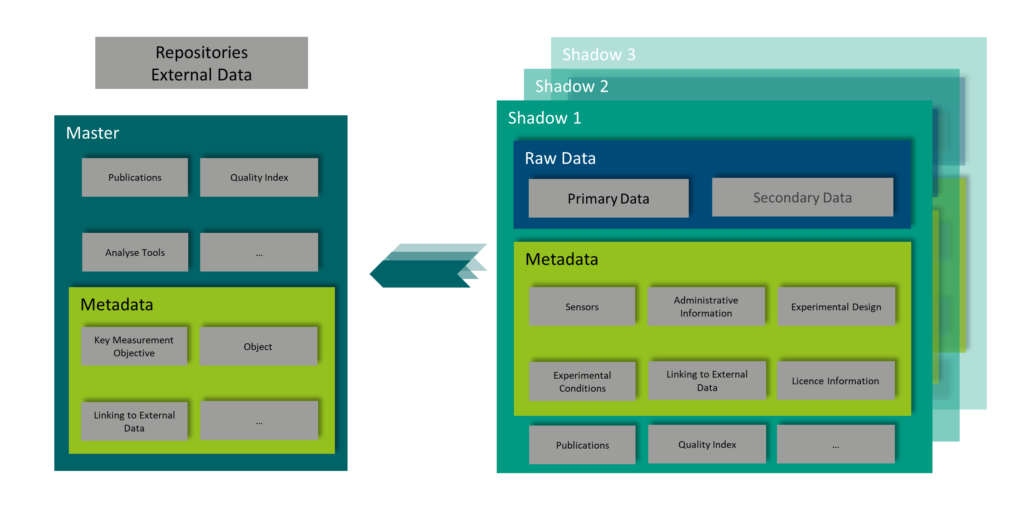introducing the archetype Golo
“Hello, I’m Golo. I’m an engineer involved in the planning, recording and subsequent analysis of field data. I collect field data from an actual or experimental operation of a cyber physical system. Field data form the basis for optimizing the methodology and parameters of the modelling of a technical system as well as its detailed analysis under real operating conditions along its life cycle. Furthermore, I use field data to prepare data sets for testing system models and enhance learning processes.
To deal with the great variety of field data, I am interested in developing methods and tools for the collection of field data, building concepts and best practice approaches for quality assurance and quality control and enhancing the analysis and reuse of field data. I am an engineer working in fields like production technology, constructive mechanical engineering, systems engineering, robotics and information technology.

key challenges & objectives
Many environment conditions of a technical system cannot be captured or fully covered. In addition, the great variety of field data, e.g. through different technical systems, requires generalized methods for collection and analysis of data as well as effective concepts to store, archive and access the data itself.
Standardization of these methods with regard to the interoperability and reusability criteria of the FAIR data principle increases the possibilities of reusing the field data. Therefore, a methodological approach is developed and implemented in order to use a digital twin of a physical system as a data representation framework. A digital twin contains actual information about its physical twin and provides a history of states and performances under different operating conditions.
The digital twin concept enables the structured representation of research field data in terms of storage, processing, and (re-)use. A digital twin contains information about the system model, methods of collection and analysis of the field data, as well as the field data itself. Furthermore, automatically generated machine-readable metadata, analyses, and derived information from raw data complete the digital twin concept.
measures
We develop a digital twin concept for organization and processing of research field data iteratively. The concept assumes that the twin has two parts: a digital master and a digital shadow. The digital master is responsible for interpreting and processing research field data. It also includes data analysis methods and data collection methods to facilitate reproduction of results. We determine typical system types and define a minimal set of necessary and sufficient information.
The digital shadow contains research data and the information obtained from its processing. We establish a digital shadow of a technical system. The shadow represents a specific instance of a physical system. By combination of several digital shadows of different instances, the shadow evolves a better understanding of the general characteristics of research objects, fleets or generations of technical systems. We specify metrics for analysis and quality control for different types of field data too.
The concept enables the classification of heterogeneous field data for metadata and label generation for human users and machines as well as automatic generation of data set summaries. In addition, best practices and checklists provide detailed descriptions of the phases and processes of working with field data. We integrate the concept into a process ready to use for an exemplary group of pilot users and identify interfaces for existing tools from RDM.
results
We develop, test and evaluate the digital twin concept for RDM on the basis of three technical systems. The first system represents road traffic. It deals with methods and tools to represent traffic digitally to improve safety. It provides a safety assessment of the road infrastructure as well as a comparison of structural or infrastructural measures. The second system contains several robotic systems under real environment conditions. Through the collection and processing of field data, reference data sets and benchmarks are created, which enable evaluation of the whole robotic system or parts of it. The third technical system is an optical light system for vehicles. It includes modelling of light-based interactions between vehicles and people to increase comfort and safety functions.
We have introduced a first digital twin concept for RDM. The digital master contains information about the experiment in general, e.g. related publications or tools used for analysis of data. In addition, metadata is provided which describes e.g. the research object or the key measurement objective. Each digital master can hold any number of digital shadows. A digital shadow contains the raw data of a unique experiment. It incorporates the raw data, which is distinguished in primary data and secondary data. The former represents the data necessary to process the key measurement objective while the latter is data which was also recorded but is not relevant for the key measurement objective. Furthermore, metadata is provided, e.g. types of sensors or the experimental design. The concept is shown in Figure 1.

contact information
The task area is lead by the co-spokespersons:
Prof. Dr.-Ing. Roland Lachmayer
Institute of Product Development
Leibniz University Hannover
Phone: +49 511 762 3471
lachmayer@ipeg.uni-hannover.de
Prof. Dr.-Ing. Regine Gerike
Chair of Integrated Transport Planning and Traffic Engineering
Technical University Dresden
Phone: +49 351 463 36501
regine.gerike@tu-dresden.de
For general information on Golo please contact:
Dr. Atefeh Gooran-Orimi
Institute of Product Development
Leibniz University Hannover
gooran-orimi@ipeg.uni-hannover.de
